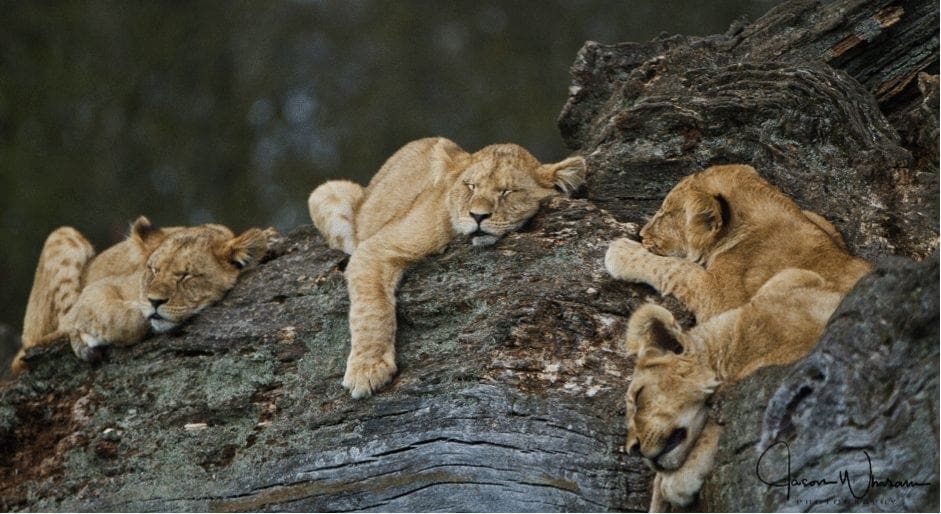Since the age of digital everyone has the power to photograph Africa’s majestic predators from the small African Wildcat to The King of Beasts the Lion. Spending nearly 19 years with these awesome creatures studying them and guiding walks in most national parks around Africa, here are some useful ideas and wildlife photography tips that I use when photographing them.
Being a photographic judge for Surrey Photographic Society I have plenty of time to look at some of the images that have been photographed over the years and tried to work out why some are better than others. Here are some tips that I think of before, during and after
Get eye contact when photographing wildlife
Eye-level shots can dramatically enhance the impact of a photograph. They say that the eyes are the window to your soul. When staring into a big cat or predator at their level gives you an idea of how powerful and majestic they are. It is not always easy to get the animal to look directly at you so try and photograph them on a termite mound or in a tree so that the eye level shot can be achieved easily. If you understand the animal’s behaviour, this can help in achieving this shot.
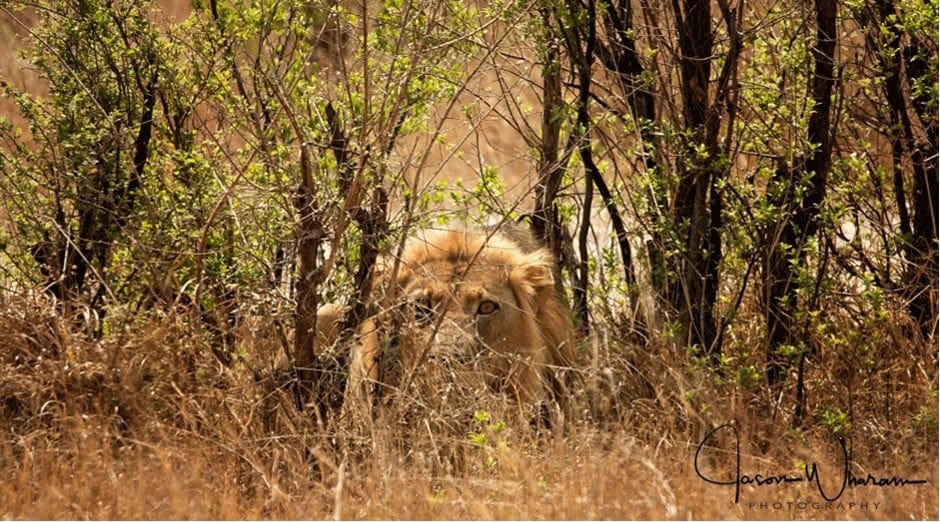
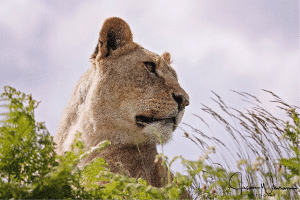
Get on their level
This takes me back to the above point of getting an eye contact shot but is slightly different and the animal does not necessarily have to be looking at you. A shot taken at eye level whether it be from the ground is not easy with big cats or from below them when they are on a raised platform are much more powerful images.
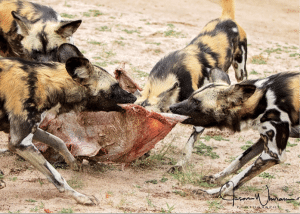 Understand their habits and be patient
Understand their habits and be patient
Many wildlife shots are based on capturing a fleeting moment, one that you might never have the opportunity of seeing or capturing again. It is valuable to be able to understand your subject’s behaviour and to Try and predict their movements. Example if a leopard has a kill there is a big chance that they will find a tree to climb so be ready for it. A clan of hyenas might start waking up in the late afternoon so be patient and wait for the cubs playing the adults greetings and affections. There is only one way to get to know wildlife…spend time with them. Don’t just hang around for a few minutes and seek out the next subject if the one you are observing or photographing isn’t delivering the goods. Persevere and stay with them.
 Don’t forget the tail
Don’t forget the tail
A tail can tell a lot about the mood of the animal and can make for some impressive and creative shots. When hunting they tend to keep their tails down in order to not bring attention to themselves and when the prey see them, you often find the tail be swung into the air as if to say ‘ I know you’ve seen me and I don’t care’. Cutting off a tail is as irritating as cutting off a limb or ear and can often destroy a great image.
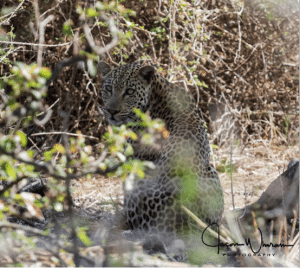 The Background/ Foreground
The Background/ Foreground
This can make or destroy an image, try and always be observant of what is around your subject. Having a busy background/ foreground unless it is part of the story generally is the difference between a great image and a holiday snap. Having a shallow depth of field will blur out the background and any nasty distractions. Being able to move around to get a better view will always help. Remember if you struggle to see the animal with your own vision the chance is that you won’t be able to see it in a photo.
Photograph the story
Another thing to remember when photographing wildlife is the old question of zooming in or out. Animals have personalities, and you want to show that which is often done better in a zoomed in picture. But you don’t want to be working really tight with long lenses all the time.
You need to show their environment too—habitat says a lot. Back off and use wide-angle lenses to give viewers a sense of where the animals live. Take pictures that tell the story even if the animal is not the subject such as the example below of a track in the sand.
Zoom out when telling a story and try to get all subjects in frame that add to that. Sometimes great pictures arrive without the animal even needing to be there. Fresh leopard tracks in the mud, late afternoon sunlight to generate crisper, longer shadows and a shallow depth of field to set the viewers eye on one particular focal point.
